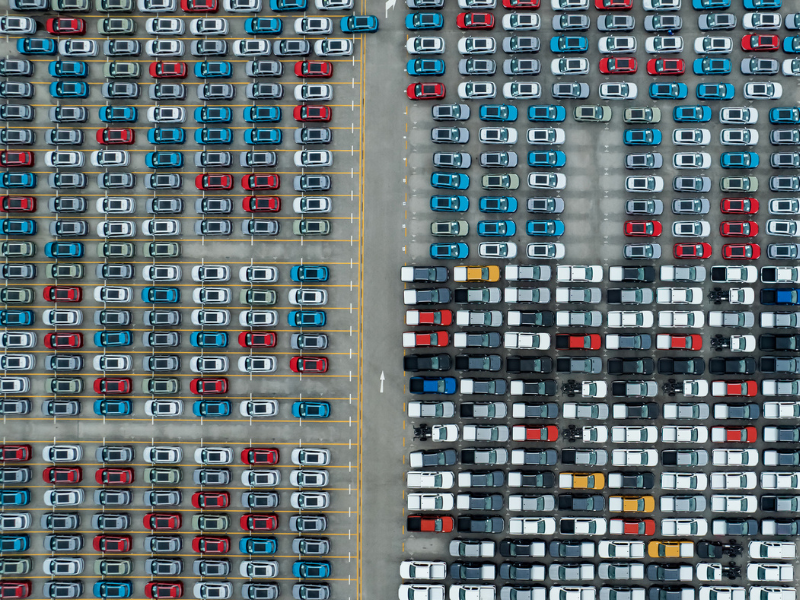Endless government subsidies to encourage EV sales seems unable to sway the logical thinking and the numerous concerns of the average citizens to buy into EV’s
With new EV inventories beginning to increase on dealer lots, the auto industry has many challenges such as locating the buyers that may have serious concerns about a wide range of issues related to EVs including:
- driving range,
- vehicle reliability,
- price,
- the availability of electricity for the buildout of the charging infrastructure,
- charging time,
- the cost and lifespan of batteries and their environmental impact,
- the actual impact EVs will have on reducing carbon emissions,
- the growing statistics about uncontrollable fires of lithium batteries in EV’s,
- problems with battery recycling and end-of-life management,
- concerns that the EV free ride of usage of highways and not paying fuel taxes is about to end with the Vehicle Mileage Tax (VMT), i.e., more costs for the EV owners of the future,
- concerns that home chargers are destined to follow the UK and be on separate meters so that EV charging will be at higher rates to help stabilize the electrical grid, again more costs for the EV owners of the future.
Another problem for the automobile industry is convincing the buyers that its ethical, moral, and socially responsible to buy an EV, especially since most of the exotic mineral and metal supplies to build the batteries are being mined in developing countries with limited environmental regulation nor labor regulations.
Interestingly, the 2021 Pulitzer Prize nominated book “Clean Energy Exploitations – Helping Citizens Understand the Environmental and Humanity Abuses That Support Clean Energy does an excellent job of discussing the lack of transparency to the world of the green movement’s impact upon humanity exploitations in the developing countries that are mining for the exotic minerals and metals required to create the batteries needed to store “green electricity”. Complimentary to the book is a 2-minute clip from Michael Moore’s 2020 documentary film, Planet of the Humans, that’s been viewed by more than 14 million, that illustrates how so-called green electricity is made.
As the future is fast approaching, virtually all the automobile manufacturers, through government mandates to reduce the emissions of their fleet of vehicles, are going all-in to only manufacture EV’s in the coming years. To meet low emissions for their fleet of vehicles, we’re most likely going to see fewer and fewer hybrids as the auto industry manufacturers need to eliminate the gasoline engines in hybrids to meet those lower emission targets.
The problem is that manufacturers are loading up the “supply chain” with EV’s on dealer lots, but they’re not seeing the “demand” for EV’s coming from the public. The current EV ownership profiles of the elite owners are that they are:
- highly educated.
- highly compensated.
- multi-car families.
- low mileage requirements for the families’ second car, i.e., the EV.
Current EV owners are dramatically different from most of the vehicle owners. Unlike the profile of current EV owners, many are single-car owners, and most of the potential car buyers are not as highly educated, nor as highly compensated as the elite EV owners. Mandating a change to EV ownership and forced austerity may face a rebellion from those that need affordable vehicle transportation.
Historically, internal combustion engine (ICE) car sales in America are upwards of 55 million annually with about 15 million or 27 percent being new and 40 million or 73 percent being used car sales.
- New vehicle sales: In 2022, the auto industry in the United States sold approximately 13.75 million light vehicle units. This figure includes retail sales of about 2.9 million passenger cars and just under 10.9 million light trucks.
- Used sales: Sales of used light vehicles in the United States came to around 38.6 million units in 2022.
With a total of 50 to 55 million ICE vehicles being sold annually for new and used, it’s obvious that the auto industry and the economy has been benefiting and prospering in the used ICE car market.
To date, the EV industry has virtually no used car market! In addition to the constant EV charging challenges, who wants a used EV that may soon need an expensive battery replacement?
With about 73 percent of all car sales being that of used combustion engine cars, the lack of a resale market for EV’s may be a major problem for the auto industry.
Since most states lack the year-round temperate climate that Californians enjoy, the distribution of EV ownership throughout the nation should be a concern to the auto industry. With 40 percent of the EV’s in America being in California, that leaves the other 60 percent being among the other 49 States, or approximately 1+ percent per State.
- To support the State’s EV growth,California imports more electricity than any other US state, more than twice the amount of Virginia, the second largest importer of electricity. California typically receives between one-fifth and one-third of its electricity supply from outside of the state.
- The other 49 states have virtually non-existent EV charging infrastructures, and a few of them may be exporting their electricity to California!
With the supply of electricity not keeping abreast of the growing demand, the UK is ahead of most of the world, protecting its grid with Smart Chargers, and setting up Separate Meters for the EV charging users to pay for a new grid!
- As of May 30, 2022, in the UK, new home and workplace chargers being installed must be “smart” chargers” connected to the internet and able to employ pre-sets limiting their ability to function from 8 am to 11 am and 4 pm to 10 pm.
- In addition to the nine hours a day of downtime, authorities will be able to impose a “randomized delay” of 30 minutes on individual chargers in certain areas to prevent grid spikes at other times.
- The UK Electric Vehicles (Smart Charge Points) Regulations 2021 came into force on June 30, 2022. All home installed electric vehicle chargers are required to be separately metered and send information to the Smart meter data communications network. Potentially this legislation allows the electricity used for charging EVs to be charged and taxed at a higher rate than domestic electricity. The technology enacted also enables the rationing of electricity for EV charging because the government can decide when and if an EV can be charged, plus it also allows the EV battery to be drained into the grid if required.
As new EV inventories on dealer lots continue to rise, there are bumpy roads ahead for EV penetration into the lifestyles of the common folks.





